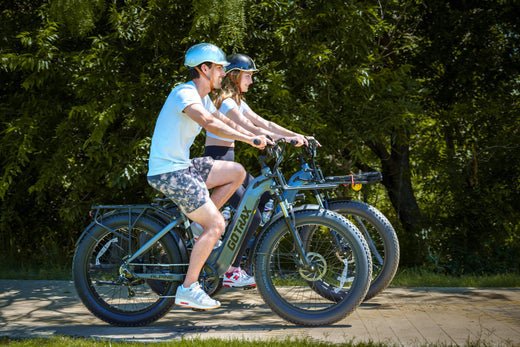Electric bike sales have soared in recent years, and for good reason: these rides offer unmatched power and utility when compared to traditional bikes, making cycling easier and more accessible for riders of all kinds. However, not all electric bikes are created equal, and the differences between some of these rides has led to the creation of different classifications for eBikes with different features and capabilities.
Many states across the U.S. abide by a three-class system for electric bikes, which impacts which electric bikes are street or trail legal and where these bikes can be ridden. It’s important to understand the laws in your area before taking off on your first adventure. Today, we'll break down each eBike class to help give you a better understanding of this three-class system and to determine which type of bike best suits your needs.
Class 1 eBikes

Class 1 eBikes are traditionally treated the most like regular street and mountain bikes in the eyes of the law; however, unlike traditional bikes, these bikes feature pedal assist technology that kicks into gear as you begin to pedal. While Class 1 eBikes do feature a motor, the motor will not run on its own unless the rider is pedaling, and they can only receive a pedal assist boost up to 20 MPH. Class 1 eBikes are a great choice for newer riders who are interested in speeding up their commute, enjoying more time outdoors, or giving their regular bike rides an electric flair. Depending on the laws in your area, Class 1 eBikes can also be an ideal choice for trail riders, as these eBikes tend to have the greatest amount of trail access when compared to other eBike classes.
Class 2 eBikes

Class 2 eBikes may appear similar to their Class 1 counterparts, seeing as they also have a maximum assisted speed of 20 MPH. However, these devices offer a unique feature—throttle assistance. While most Class 2 eBikes also have a pedal-assist option, the throttle allows riders to cruise without pedaling at all, instead relying solely on the bike’s motor to power the journey. The throttle is found on the handlebars of the bicycle and can be turned on with a twist of the handlebar grip or the flick of a lever. These eBikes are a great option for riders with reduced mobility or injuries and are great for traveling in groups. They’re also fantastic for those who just want to take it easy while they ride, and they're the perfect way to get around a wide variety of locations. This eBike class allows you to choose whether you engage in high intensity exercise or a lower effort ride: no matter what you pick, the rider has ultimate control. However, be mindful of how much you rely solely on the throttle, as this feature takes a toll on the bike’s battery life.
Class 3 eBikes

Class 3 bikes are similar to Class 1, with the differentiating factor being the maximum assisted speed—which is set to 28 mph, making them the fastest of the e-bike options. Additionally, these devices must feature a speedometer to remain in compliance with safety protocol. When it comes to adding a throttle to Class 3 bikes, laws differ by state. While some states prohibit the throttle feature on Class 3 bikes altogether, other states permit them up to speeds of 20 mph, while allowing pedal-assist speeds to remain at 28 MPH. Be sure to check your local laws to determine where it’s safe to ride class 3 eBikes, as these bikes may be prohibited from specific paths and bike lanes in your area.
We hope this guide helps you determine the right eBike for you so that you can get the most out of each and every ride. eBikes differ in a number of ways besides their class designation, including the style of eBike, so if you're still not sure which ride is best for you, consider checking out our guide to the different kinds of eBike. No matter what class of eBike you choose, just remember to stay safe, follow the rules of the road, and always wear a helmet!






